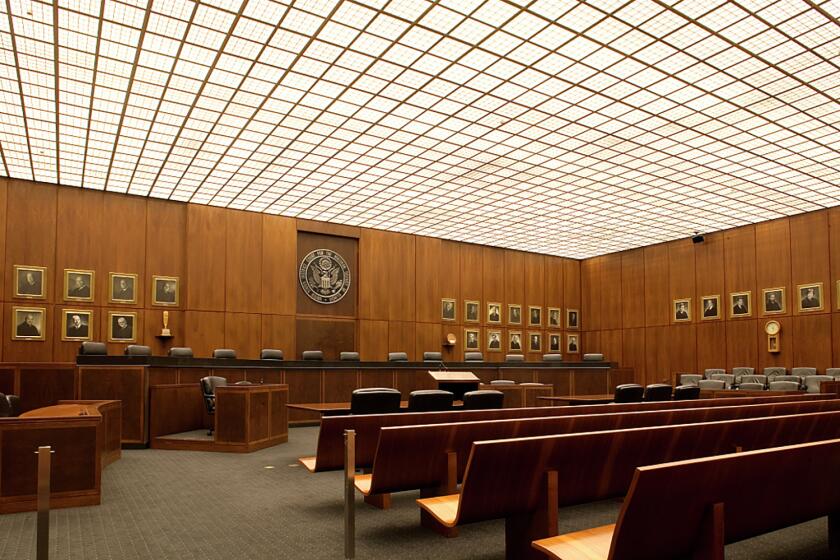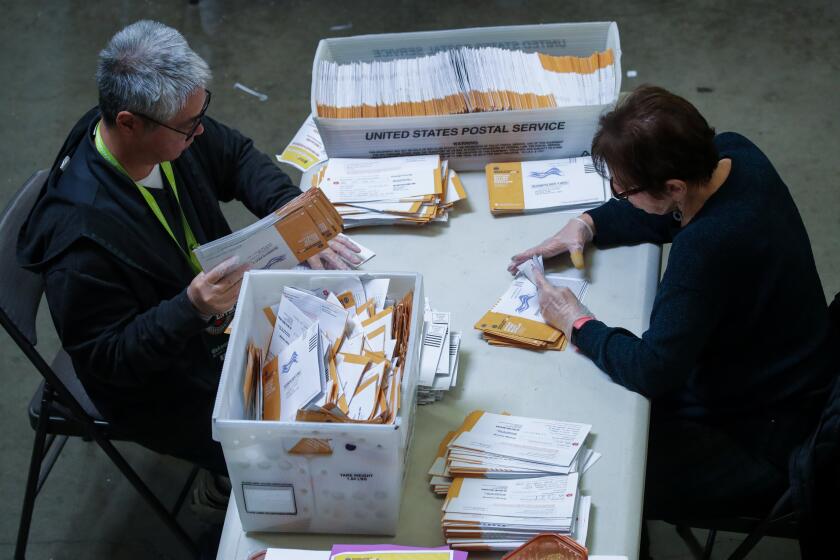Prison realignment done right
Californians shouldn’t be surprised by recent reports, such as The Times’ front-page story Friday, that county jails are filling up. Public safety realignment is no secret. After years of refusal to consider sentencing reforms, inability to provide adequate drug treatment, unwillingness to prepare parolees for lives outside prison and a continuing insistence on locking up more people longer, state prisons became so overcrowded that the U.S. Supreme Court ordered the population reduced. There was no appetite among the public or their elected representatives to build and staff more prisons. The state’s options were to immediately release 33,000 inmates onto the streets, or to “realign”: move much of the authority for inmates to the county level. Gov. Jerry Brown wisely chose the latter course. Counties now have to do what state government couldn’t: make choices about whom to keep behind bars, whom to monitor at home with ankle bracelets, whom to refer for drug treatment.
The emergency realignment builds on a nationwide movement of more thoughtful, more deliberative decisions to incarcerate less and rehabilitate more. Many of the progressive innovations in criminal justice are coming not from supposedly liberal states and officials, but from conservatives who are determined to focus on cost and outcomes while keeping justice in the forefront. The group Right on Crime is setting the pace in states such as Texas. At the same time, leaders on the left, in California and elsewhere, have been conspicuously quiet about making realignment work. It’s time for liberals who have long criticized the prison-industrial complex to redirect the local discourse from panic to progress.
There’s no doubt that our current realignment program — the one that threatens to fill county jails — was less the result of a thoughtful plan than a slap-dash move in response to crisis. It would have been preferable for California to move forward without such emergencies. On this issue, however, as with so many others, it didn’t.
But there is a precedent with at least some record of success: In 2007, after a parallel crowding and abuse crisis at the California Youth Authority, the state realigned juvenile justice programs to send more youth offenders back to their home counties. For all the dysfunction of Los Angeles County’s Probation Department, officials were able manage the new population of juveniles returning to their communities — sometimes with home detention and monitoring, often with alternative programming — without upticks in youth crime.
This time, there will no doubt be high-profile mistakes, but if the county could deal with youth realignment, it has a decent shot at dealing with its larger counterpart. Hardened criminals need not be released, if the county can learn from others throughout the state and nation how to distinguish between nonviolent suspects awaiting trial and dangerous convicts who belong behind bars.
More to Read
A cure for the common opinion
Get thought-provoking perspectives with our weekly newsletter.
You may occasionally receive promotional content from the Los Angeles Times.






